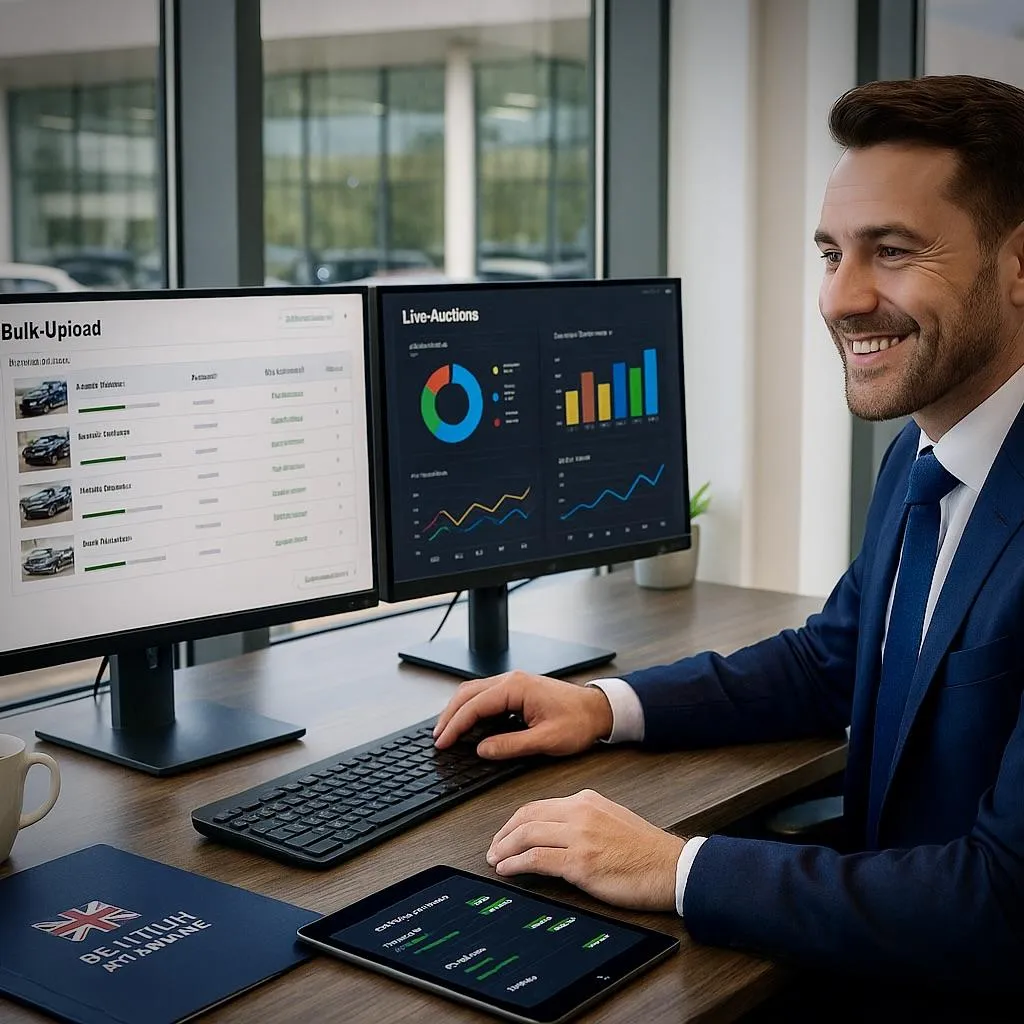
Multi-Listing Dealer Platforms: Scaling Online Auctions Effortlessly
In 2025, the UK used car trade is all about speed, scalability, and control. Dealers—whether independents or part of a network—are handling larger volumes of stock than ever, and the pressure to move vehicles quickly without sacrificing margin is intense.
This is where multi-listing dealer platforms come into play. Designed to streamline online auctions for dealers, these platforms enable bulk vehicle disposal, give full control over the sales process, and provide the analytics needed to refine strategy over time. More than just a listing tool, they’re becoming the backbone of modern scalable SaaS auction solutions.
This article will show how multi-listing platforms are helping UK dealers scale auctions effortlessly, while boosting profits, cutting admin, and making data-driven decisions.
1. What Are Multi-Listing Dealer Platforms?
At their core, multi-listing platforms are cloud-based auction systems built for high-volume dealers. They allow you to:
• Upload dozens or even hundreds of vehicles at once via bulk CSV import or direct DMS integration.
• Host auctions in timed, rolling, or live formats across multiple buyer audiences simultaneously.
• Manage reserve pricing and re-lists automatically.
• Track real-time performance analytics (views, bids, sell-through rates, and margins).
In short, they replace clunky manual uploads and third-party bottlenecks with a single, scalable platform that keeps you in control.
2. Why Dealers Are Turning to Multi-Listing Tools in 2025
Traditional methods—uploading stock one by one or relying on public auction houses—simply can’t keep up with today’s pace.
Key reasons dealers are making the switch:
• Bulk vehicle disposal trade: Move entire fleets or aged stock without weeks of staggered listings.
• Fewer manual tasks: One upload can push listings to multiple sales events and buyer groups at once.
• Better margins: Avoid heavy per-unit auction fees and regain control of reserves.
• Buyer loyalty: Use a single branded environment to keep trade buyers returning.
By combining automation with analytics, multi-listing platforms aren’t just a time-saver—they’re a profit driver.
3. The Core Features Dealers Need
Every multi-listing platform isn’t created equal. To scale effectively, your SaaS auction system should include:
These tools not only simplify operations but also give you actionable insights into what’s selling, when, and to whom.
4. Bulk Vehicle Disposal Made Simple
A key advantage of multi-listing platforms is how they handle bulk disposal without bottlenecks.
Instead of:
• Uploading one car at a time
• Waiting for auction houses to batch your units
• Paying £75–£300 per listing in seller fees
You can:
• Upload full fleets instantly
• Push the stock into multiple auction events at once
• Let the system automatically adjust reserves to clear aged units
• Track every vehicle’s journey (from listing to sold) through analytics dashboards
Dealers using this approach report stock turn reductions of 40–60% compared to public auctions.
5. Auction Scalability for Growing Dealer Networks
For dealer groups, scalability is everything. Multi-listing SaaS platforms allow you to:
• Run auctions across multiple locations simultaneously, all under one brand.
• Standardise listing templates, reserve logic, and buyer communications for consistency.
• Share buyer pools across sites to increase engagement.
• Use data from every branch to inform group-level pricing and stock allocation.
This makes them ideal for networks disposing of fleet returns, part-exchange stock, or franchise overstock.
6. Data: Turning Insight into Advantage
What truly separates the best platforms from generic auction software is deep analytics.
What You Should Track:
With this data, you can fine-tune your auction schedules, stock mix, and buyer outreach to maximise returns.
7. Streamlining Slow-Moving Stock
Multi-listing tools shine when it comes to problem inventory. Features like:
• Automated relists with lowered reserves
• Targeted buyer alerts for interested segments
• Flash auctions to clear aged vehicles quickly
help reduce days-in-stock and storage costs, all while maintaining healthy turnover.
8. Why a Scalable SaaS Auction Platform Is the Future
With rising stocking costs, tightening margins, and a shift to online trade sales, scalable SaaS auction systems are no longer optional—they’re a necessity.
The right platform allows you to:
• Own the buyer journey from start to finish
• Protect your brand and data
• Handle everything from part-ex to fleet liquidation without paying middlemen
• Grow seamlessly as your stock volumes increase
9. Tips for Dealers Ready to Scale
To maximise the value of a multi-listing platform:
1. Invest in listing quality—professional photos, full details, and video where possible.
2. Segment your auctions—dedicated events for EVs, SUVs, or export stock drive higher bids.
3. Use valuation tools to set reserves that attract buyers without eroding margin.
4. Market to your buyer base with SMS, email, and push alerts.
5. Review analytics weekly to adjust strategy and pricing.
Conclusion
For UK dealers looking to scale online auctions, reduce admin, and move stock faster without bleeding margin, multi-listing dealer platforms are the solution.
By combining bulk listing tools, valuation logic, trade-focused segmentation, and real-time analytics, these platforms turn vehicle disposal into a streamlined, profit-generating process.
In 2025, dealers who rely on public auctions risk falling behind. Those who embrace scalable SaaS auction tools will enjoy faster stock turn, stronger margins, and tighter control over their brand and buyer base.

